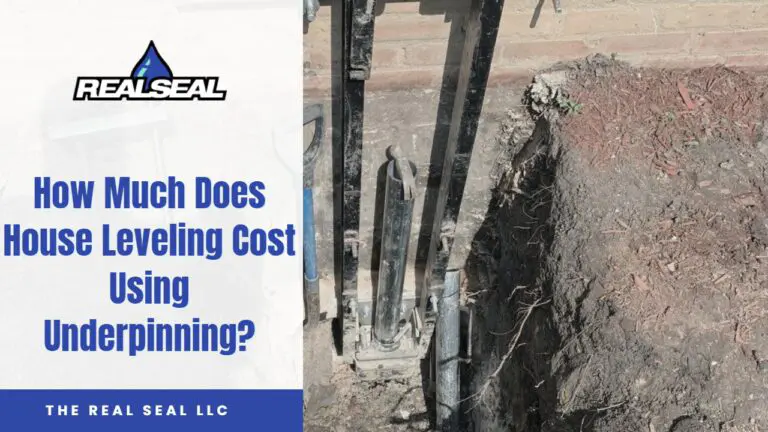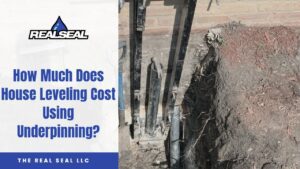If you’re wondering how much house leveling costs, this is the article for you! House leveling is a very important form of foundation repair that can solve all sorts of annoyances, such as sticking windows/doors, foundation cracks, drywall cracks, and more. House leveling shouldn’t be a complicated process that leaves you unsure whether it’s the right solution for your home. That’s why we wrote this article.
How Much Does House Leveling Cost Using Underpinning?
The cost of house leveling is based on how many piers are needed to lift your home. Each pier is about $2,000. In some cases, only one section of your home is settling and needs to be leveled, meaning you don’t need as many piers as usual.
Note: Before you choose a foundation repair company that offers underpinning, make sure they don’t have a “depth clause” in their contract. A depth clause means the company’s piers will only go to a certain level before each extra foot costs you more money. This means that a depth clause could double the overall price of your project. You’ll be happy to know The Real Seal does not have a depth clause.
What Is Underpinning?
Underpinning is when foundation repair experts lift and level your settling foundation using piers. These piers are attached to your foundation and are either pushed or twisted into the soil until they reach load-bearing strata (strong soil). Once they reach stronger soil, hydraulic jacks lift your home back to the maximum practical level (the ultimate lift achievable before the movement causes any unnecessary damage). There are two types.
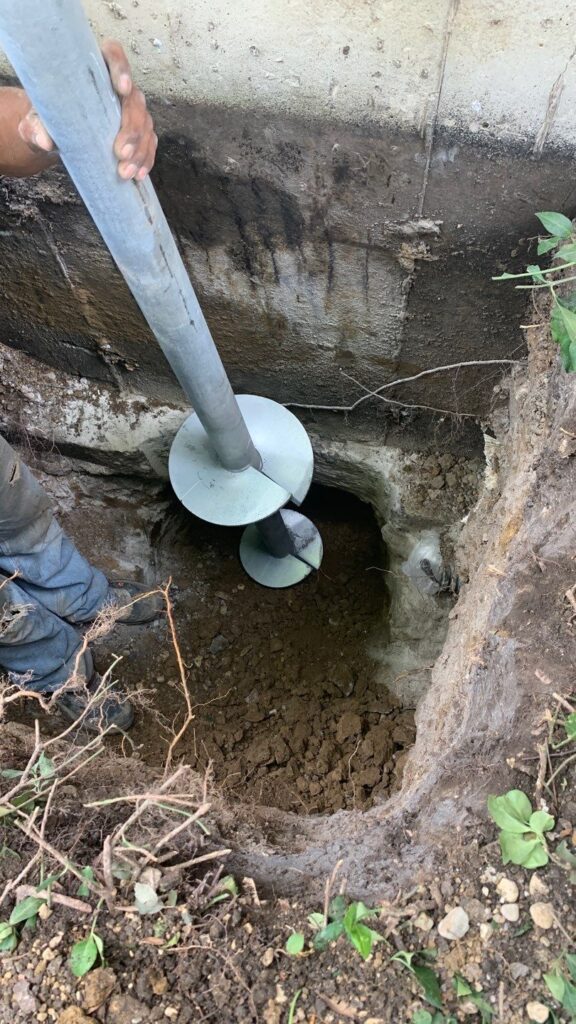
- Steel push piers – These piers are pushed deep below your soil, one section at a time.
- Helical piers – These piers are twisted into the dirt like corkscrews.
When Do You Need House Leveling?
House leveling is usually needed when your home’s foundation settles or sinks into the soil below it. Here are a few tell-tale signs that you need house leveling.
- Foundation cracks – These cracks are split into two categories: structural and non-structural. Structural cracks can clearly indicate that you have a foundation problem that needs to be addressed as soon as possible. Structural cracks are usually larger than 1/10th of an inch, while non-structural cracks are below 1/10th of an inch. Both crack types can be caused by settlement, expansive soil, hydrostatic pressure, and more.
- Uneven or cracked floors – A settling home can create cracks in your wooden, concrete, or tile flooring. This can lead to unsteady appliances, uneven furniture, and trip hazards. Floor cracks leading from wall to wall are also a sign that your home needs leveling.
– Sticking windows and doors – If your home is settling, it could throw your windows and doors out of plumb, making them hard to close or open.
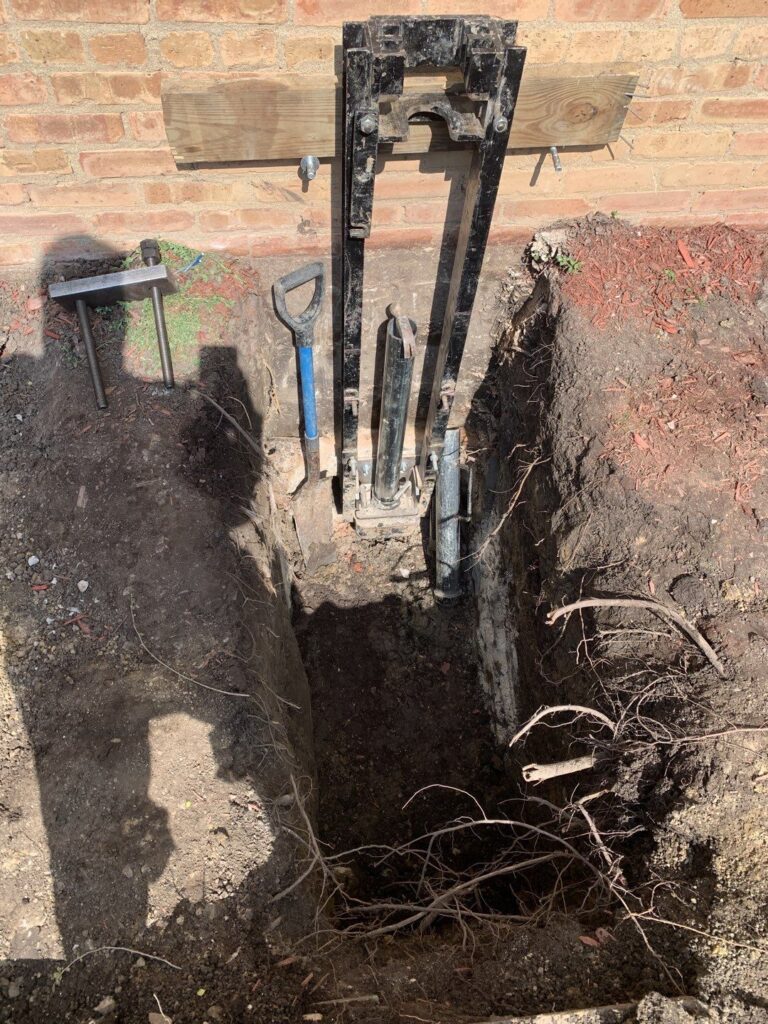
- Separating sections of your home – An settling foundation can cause walls, floors, and ceilings to separate from each other.
- Drywall cracks – If you notice drywall cracks running diagonally from the corners of your doors and windows to the ceiling, you might need house leveling.
- Your porch or chimney is separating from your home – A settling foundation can cause your chimney or porch to separate from the rest of your home. Note: This could be an issue with the foundation directly under your chimney or porch and may not be the actual home foundation.
Why Does Your House Need Leveling?
Most homes that need leveling have weak soil below the foundation. Here are a few different reasons why that’s the case.
- Expansive soil – This soil type contains mainly clay and will grow or shrink based on how much water it absorbs. This swelling-shrinking cycle creates movement in the soil, putting stress on your foundation.
- Inadequately compacted soil – Before your concrete foundation is poured, builders need to compact the dirt so that the soil particles are closer together, eliminating any voids or pockets. If this important step is skipped or done improperly, your foundation could settle into the soil.
- Erosion – If your property is sloping toward your foundation, water could erode the soil from under your home, causing it to settle.
- Tree roots – Tree roots can drink all the water in your soil, drying it and causing voids to form. When the trees and roots die, the pockets left behind can also cause the foundation to settle.
- Soil creep – This is when the soil at the top of a hill makes its way down the hill. If your home was built on the side of a hill or below a hill, soil creep could cause your foundation to move laterally.
- Natural disasters, poor construction, and renovations – Earthquakes, floods, and drought can all cause foundation damage. Foundation problems can also result from poor construction or additional weight on your foundation, such as an extra floor.
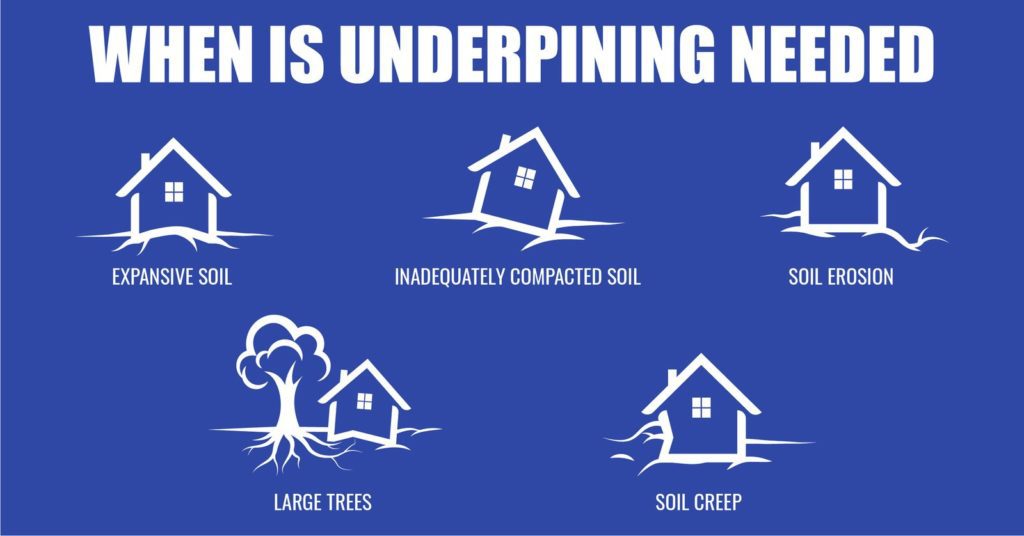
Who Offers House Leveling Near You?
If you need house leveling or want to know more about the process and cost, call The Real Seal. Since 2011, we’ve been providing different foundation repair methods all across the Chicagoland area. We also offer basement waterproofing and concrete leveling. Call today for your free inspection and estimate.
Please note that the prices referenced in this blog have not been updated since publication and may differ from current prices. Current price estimates are available upon request.
